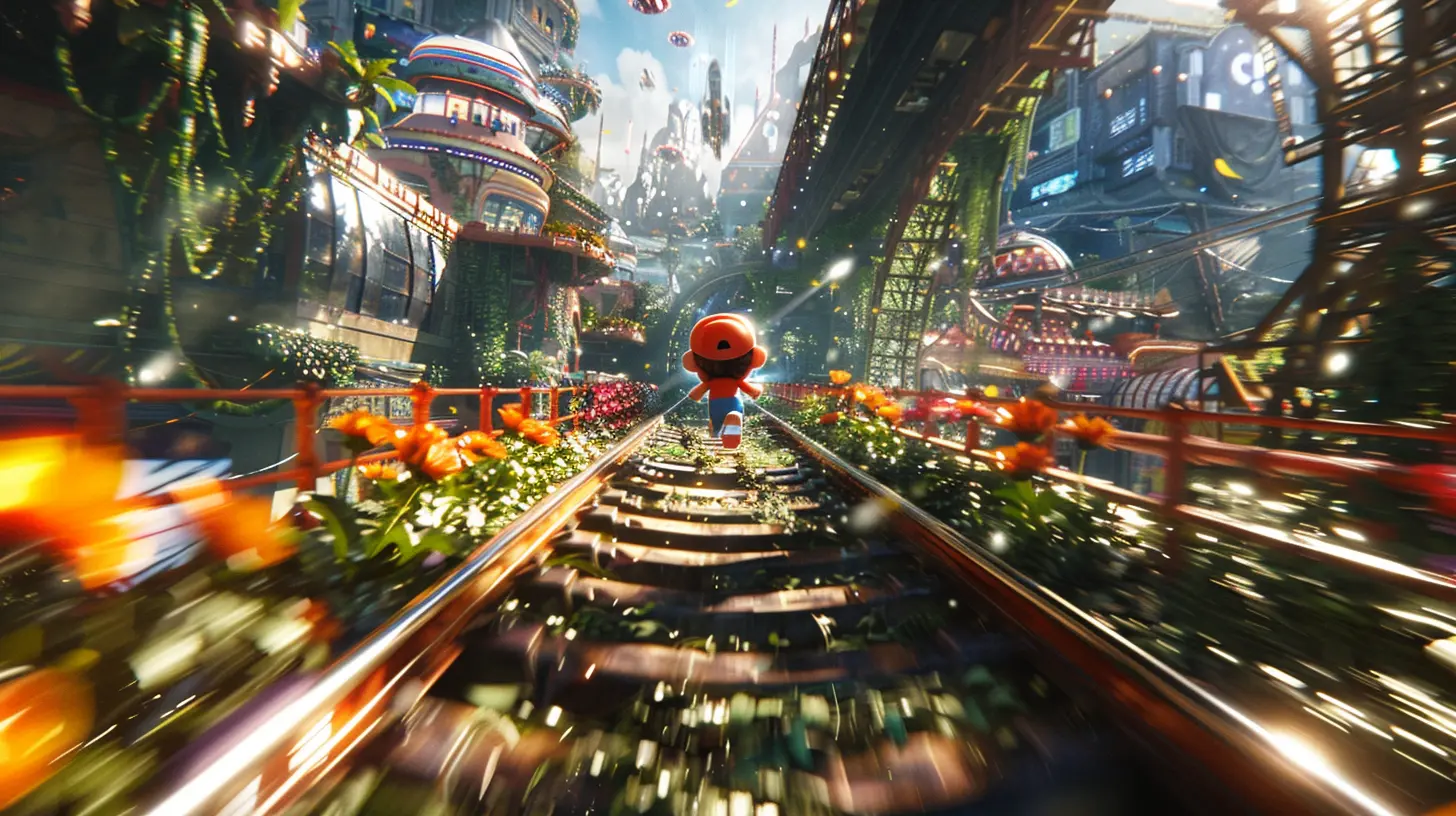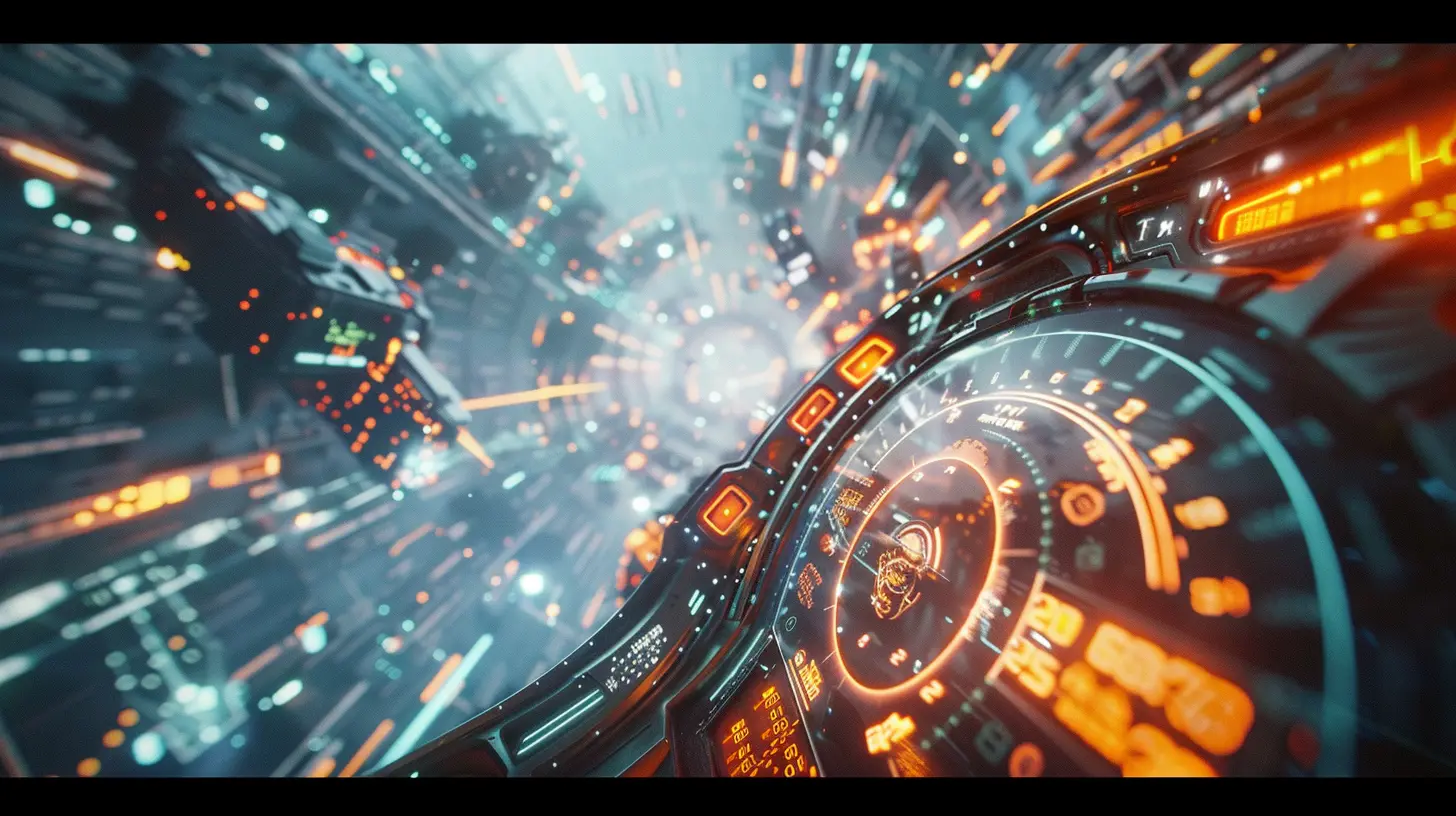The Physics of Speedrunning: How Game Engines Can Be Manipulated
5 October 2025
Speedrunning. If you're a gamer, you've probably watched a few jaw-dropping speedruns of your favorite titles. Maybe you've even tried your hand at one. But have you ever wondered how speedrunners manage to shatter records by seemingly bending the very rules of the games they play? The answer lies in a fascinating mix of skill, creativity, and, most importantly, manipulating the intricate physics of game engines.
Let’s break down how speedrunning works and dive deep into the mechanics that make it all possible. Who knows? Maybe this will inspire you to chase your own world record!
What is Speedrunning?
Speedrunning is exactly what it sounds like—playing a video game as fast as humanly (or inhumanly) possible. The goal isn’t just to beat the game; it’s to crush it, finding the quickest route from the start screen to the final credits. Speedrunners often divide their attempts into categories: "Any%", where anything goes to beat the game, or categories like "100%", where they must complete everything the game has to offer.But here’s the kicker: speedrunning isn’t just about playing fast. It’s about getting creative and exploiting gaps in a game’s logic—those weird little cracks in the programming that developers didn’t foresee. That’s where the magic of game engine manipulation comes into play.
How Game Engines Work: The Foundation of Speedrunning
Before we can understand how speedrunners manipulate game engines, we need to know what these engines actually do. Think of a game engine as the backbone of a video game. It’s like a stage where all the actors (characters, items, enemies) perform and follow a script. This "script" includes things like physics, collision detection, and how objects interact with the virtual world.A game engine ensures that gravity pulls your character down or that you can’t walk through walls. But here’s the catch: no engine is perfect. Every line of code can’t possibly account for every scenario. This is where speedrunners sniff out opportunities to break the rules. In essence, they're like hackers finding a loophole in the system.
Breaking the Rules: How Game Engines are Manipulated
Speedrunning isn’t just about being fast with your thumbs—it’s about being smart with your brain. Speedrunners learn how to exploit game engines using glitches, shortcuts, and other techniques that make the impossible... possible. Let’s look at some of the most common ways they do it.1. Glitch Exploitation
Glitches are the bread and butter of speedrunning. These are errors in the game’s programming that can behave unpredictably. For example:- Wall Clipping: Ever see a speedrunner walk through a wall like it wasn’t even there? They’re exploiting a glitch in the way a game calculates collision.
- Out-of-Bounds Exploits: Certain glitches allow players to leave the intended playable area, skipping huge chunks of the game. Imagine a level built like a cake, and speedrunners finding a way to scrape off half the layers before eating it.
2. Physics Manipulation
Game physics are tricky to manage, and speedrunners use this to their advantage. For instance:- Momentum Conservation: In many games, your momentum carries over from one action to another. Speedrunners find ways to stack this momentum, like using bunny hopping in Quake to move at breakneck speeds.
- Gravity Oversights: Some games don’t handle gravity calculations perfectly, letting players “float” or perform infinite jumps. Who needs wings when you have bad physics?
3. Sequence Breaking
Games are often designed with a specific order in mind—do A before B, then C. Speedrunners laugh at this notion. Sequence breaking involves skipping major parts of the game by accessing areas early. For instance, in The Legend of Zelda: Ocarina of Time, a well-documented wrong warp glitch lets players skip directly to the final boss from the very first room!4. Timing and Frame-perfect Inputs
Here’s where things get wild. Some exploits require hitting specific buttons with pin-point precision, down to a single frame (we're talking 1/60th of a second in most games). For some, this is where human skill and muscle memory meet mastery.
Famous Examples of Speedrunning Manipulation
We can’t talk about speedrunning without tipping our hats to some iconic examples. Here are a few legendary games that have been obliterated thanks to engine manipulation:1. Super Mario 64
Ah, the beloved SM64. Speedrunners have turned this game inside out, using techniques like the "Backwards Long Jump (BLJ)" glitch to break through doors and bypass entire sections of the game. Watching Mario fly backward at warp speed is a sight to behold!2. Dark Souls
You’d think a game as punishing as Dark Souls wouldn’t lend itself to speedrunning. But speedrunners have found ways to skip bosses, exploit out-of-bounds areas, and finish this notoriously hard game in under 30 minutes. Dark Souls speedrunning is nothing short of an art form.3. Portal
Valve’s physics-based puzzler is one of the most popular games in the speedrunning world. Speedrunners abuse its momentum mechanics to fly across maps, solve challenges in ways the developers probably never imagined, and beat the game in record time.The Human Element: Practice Makes Perfect
Here’s the thing about speedrunning: it’s not just about knowing these tricks. It takes an insane amount of practice, patience, and passion. Speedrunners spend hundreds (if not thousands) of hours perfecting their craft. They study a game’s mechanics, watch other runners, and experiment endlessly.Many runners even create custom setups to practice specific sections over and over. Think of it like training for the Olympics—only the competition is against a clock and your own limits.
Why Do We Love Speedrunning?
As gamers, speedrunning appeals to something deep inside us. It’s the ultimate expression of mastery. It’s about taking something that seems impossible and proving it can be done. Plus, it’s wildly entertaining to watch.Also, let’s be real: there’s something truly satisfying about seeing a game’s "order" utterly destroyed. Watching Mario fly backward through walls feels like breaking the rules in the best possible way.
The Future of Speedrunning and Game Physics
As games get more complex, so too do their engines. Developers are becoming better at patching glitches and fine-tuning mechanics. Does this mean the end of speedrunning? Not a chance. If history has taught us anything, it’s that speedrunners will find a way.In fact, modern games with intricate physics systems, like Breath of the Wild or Elden Ring, provide a whole new playground for runners to exploit. As long as there are games, there will be passionate gamers pushing them to their limits.
Final Words on the Physics of Speedrunning
The world of speedrunning is a fascinating intersection of gaming, science, and art. It’s proof that creativity knows no bounds, and even the most rigid rules can be broken. By understanding the physics of speedrunning and how game engines can be manipulated, we gain a deeper appreciation for the dedication and ingenuity of the runners who keep surprising us.So next time you watch a speedrun, remember: it’s not just about going fast. It’s about thinking fast and using the game’s own mechanics against itself. Kind of poetic, isn’t it?
all images in this post were generated using AI tools
Category:
SpeedrunningAuthor:

Avril McDowney
Discussion
rate this article
1 comments
Rusty Rivera
Great insights on speedrunning! It’s fascinating how players exploit game physics for optimal performance. Well done!
October 7, 2025 at 3:34 AM

Avril McDowney
Thank you! I'm glad you found the insights intriguing. Speedrunning truly showcases the creativity and skill of players in manipulating game physics!


